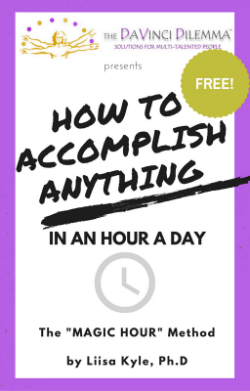By Mapto [Public domain], from Wikimedia Commons
Perhaps you have a vague, intuitive sense of your creative activities — of where you are at in a given project and what needs to happen going forward. It might be a gut feeling of being ‘behind’ or a indistinct intention to finish ‘sometime’. And this can be such a tenuous sort of monitoring that things fall through the cracks or are done inefficiently.
Sometimes we waste resources or time — and probably other people’s time — because of missed deadlines or miscalculations or errors in sequencing which activities need to happen in which order.
Sometimes we can’t find work we’ve already done…so we are forced to do it again, costing us more time and effort.
Sometimes our communications are weak or ineffective because we don’t have an adequate grasp on our project.
Sometimes our progress is derailed because our understanding of our project is too vague to solve challenges or obstacles that arise.
Without adequate monitoring, our activities on a given creative project can wane or cease.
Sometimes it’s been so long since we worked on something, it takes a great deal of momentum to bring ourselves back up to speed, let alone proceed.
Sometimes entire projects become forgotten. Have you ever discovered a partially completed project…and you can’t recall starting it, nor can you fathom why or when you stopped working on it?
To the extent that you can keep good track of your major creative projects, you can avoid all these costs. You can get more done, more efficiently with less stress and less waste. You can put your time, efforts and creativity to good use, rather than squander it. You can identify challenges and solve problems you encounter . You can assess and manage risks as they arise.
Effective project management involves keeping track of the Holy Trinity — the time frame, scope and resources — of our creative activities. Time frame is straightforward: what needs to be done by when. Scope includes the size and nature of the project — as well as it’s purpose. Resources include not only the financial costs and necessary materials but also the people involved — the customers, colleagues, service providers and stakeholders.
If we are launching a major new creative project with foresight and purpose, it’s easy enough to give some thought to how it makes sense to monitor our progress. Maybe there are particular milestones or deadlines or audiences to target.
But sometimes creative endeavors begin with less foresight or fanfare. We start off writing a blog post and before we know it we realize we’re four chapters and four months into drafting a new novel. Or a brainstorming session leads to some general inquiries and random conversations and poof! two years later we’re somehow filing a patent for a new product.
It doesn’t matter how or when you realize you’re working on a major new creative project, the point is that once you recognize it, you have an opportunity to manage the project more effectively. With just a few minutes of attention, you can instigate some project management techniques and reap their benefits.
Let’s start right now.
What major creative projects are you working on these days? Make a list.
Pick your most important project. Define its scope, including its purpose. Describe your time line. What are your major milestones and deadlines? What resources are being invested in this project — financial, materials, and personnel? How are you keeping track of your progress — your activities, your costs, your communications? How are you monitoring what you’ve done and what you have to do?
If you detect some gaps in your project management, commit to finding solutions that will work for your unique situation and personal preferences. There are all manner of apps, websites and software available to keep track of projects, if that appeals. Some prefer charts and visual representations to see ‘at a glance’ the status of different aspects of the project. It can be as simple as dedicating a computer file or journal to record of all aspects of a project — your ideas, your plans, your activities, costs and goals. Ideally, you’re seeking a handy, easy way to capture all thoughts and ideas about the project; to make notes about what you need to ask or discuss with whom; to keep track of what you’ve pitched to whom, when.
If you are working on more than one major creative project, set up relevant systems to manage each of them. In each case, strive for something simple and easy. The goal here is to keep yourself aware, informed and on track. It’s not helpful if your project management is unduly taxing or stressful.
Personally, I like using hard cover journals for each project. It may seem old school but its served me well for decades. I can write, sketch, color code; glue in clippings and pictures, draw graphs and timelines, log communications and meetings — all without relying on electricity or risking electronic failures. (Having lost electronic files, have hard drives crashed and even lost all the data in an electronic organizer, I’m comfortable using Luddite methods to keep tabs on my most important projects). These journals are easy to carry around, easy to shelve and always at the ready. Tucked inside the front of each is a single piece of paper to represent the overview of the entire project — usually festooned with post-its. “To Do Today”; “To Do This Week”; Questions; and so forth.
The other important piece here is to establish a regular review of the project. Spend at least a few minutes on a regular basis — daily or weekly or whatever makes sense — to take stock of each of your major creative projects: where are you at? What’s completed? What’s next? What’s working well? What’s not? What adjustments need to happen going forward?
Activity: Review the project management of your most important creative project. Commit to finding solutions to keep track of your project’s scope, including its purpose. Describe your time line. What are your major milestones and deadlines? What resources are being invested in this project — financial, materials, and personnel? How are you keeping track of your progress — your activities, your costs, your communications? How are you monitoring what you’ve done and what you have to do? What will be an easy way for you to monitor these aspects of your project going forward? What would be an effective interval to have a regular review your your project — daily, weekly or something else? Schedule it and make it happen.
***
 Want more tips and techniques for getting things done? Check out my book YOU CAN GET IT DONE: Choose What to do, Plan, Start, Stay on Track, Overcome Obstacles, and Finish
Want more tips and techniques for getting things done? Check out my book YOU CAN GET IT DONE: Choose What to do, Plan, Start, Stay on Track, Overcome Obstacles, and Finish
Available here in paperback and eBook fomats: http://bit.ly/YouCanGetItDone
***
Want to re-publish this article? Go for it – just include the author’s name, a link to this original post and the following text blurb:
Are you struggling with too many talents, skills, ideas? You may have The DaVinci Dilemma™! Find tools, fun quizzes, coaching, inspiration and solutions for multi-talented people at http://www.davincidilemma.com/ .



